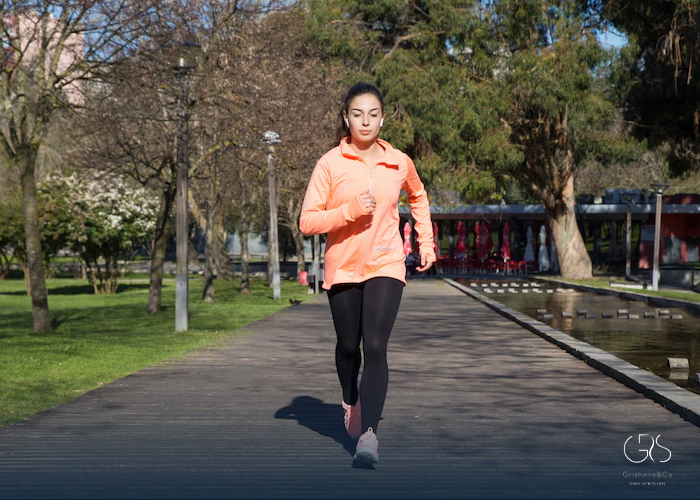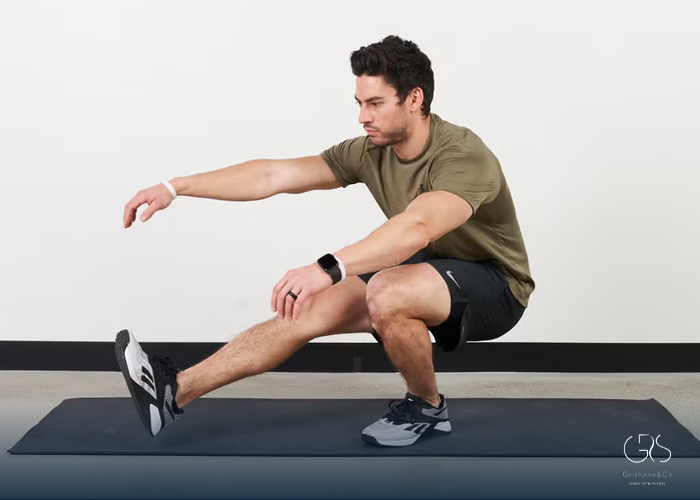When it comes to shedding unwanted pounds and sculpting a leaner waistline, traditional gym routines and land-based cardio often steal the spotlight. But recent research suggests that pool workouts — also known as aquatic or water-based exercises — may be just as effective, if not more so, in helping individuals lose weight and reduce abdominal fat. More importantly, they offer a joint-friendly, inclusive, and often more enjoyable alternative to conventional workouts.
In this article, we’ll explore how aquatic exercise works, the science behind its weight loss benefits, how it targets the waistline, and practical guidance for those looking to make a splash in their fitness journey.
Why Pool Workouts Deserve Attention
Water exercise isn’t just for rehabilitation or senior fitness classes. It provides resistance, cardiovascular stimulation, and flexibility training all in one. The unique properties of water — including buoyancy, hydrostatic pressure, resistance, and thermodynamics — create a full-body workout environment that reduces stress on joints while enhancing calorie burn and muscle engagement.
Many health professionals now recommend water workouts not only for their safety and accessibility but also for their growing scientific validation in aiding weight loss.
(I recommend reading my article about the health benefits of swimming)
What Does the Research Say?
1. Weight Loss and Waist Circumference Reduction
A 2017 randomized clinical trial published in the Journal of Sports Science and Medicine compared the effects of aquatic vs. land-based aerobic exercise in overweight and obese women. The study found that both groups lost weight, but the aquatic group experienced a greater reduction in waist circumference over 12 weeks.
“Hydrotherapy exercise significantly reduced waist circumference and fat mass in comparison to control,” the researchers noted.
(Source: Journal of Sports Science and Medicine, 2017)
2. High Calorie Burn Without Joint Stress
A 2010 study published in the Journal of Strength and Conditioning Research found that moderate-to-high intensity aquatic exercise burned comparable or even higher calories than similar intensity land workouts, largely due to the added resistance of water and increased heart rate response.
3. Impact on Visceral Fat
Another study from 2021 in Obesity Research & Clinical Practice concluded that a 16-week aquatic aerobic program led to a significant decrease in visceral fat — the deep abdominal fat linked to cardiovascular disease and type 2 diabetes.
How Pool Workouts Support Weight Loss
1. Increased Caloric Expenditure
Water is about 800 times denser than air. This means every movement in water meets resistance, leading to higher energy expenditure even during simple aerobic exercises like walking or jogging in place.
For instance, one hour of moderate water aerobics can burn between 400 to 500 calories, depending on intensity and body weight — comparable to running or high-intensity cycling.
2. Full-Body Resistance Training
In the pool, your muscles are constantly engaged to move against water resistance. This provides muscle toning and strength-building benefits, which boost your basal metabolic rate (BMR) — the number of calories your body burns at rest.
3. Buoyancy = Lower Injury Risk
The buoyancy of water supports up to 90% of your body weight. This significantly reduces impact on joints, making it ideal for those with obesity, arthritis, or orthopedic conditions that prevent traditional cardio workouts.
This low-impact environment allows individuals to exercise more consistently and for longer durations, which contributes to sustainable weight loss.
4. Thermal Regulation and Fat Mobilization
Exercising in water also improves circulation and thermal regulation. Cold water may help increase the activity of brown adipose tissue (BAT), which plays a role in burning calories and generating heat. Though research is still evolving, there’s evidence suggesting cold aquatic exposure may aid in fat mobilization.
Targeting Belly Fat: Can Pool Workouts Really Trim the Waist?
While spot reduction — losing fat from a specific area — is largely a myth, water workouts can contribute to total fat loss, which includes visceral and subcutaneous fat from the abdominal region.
Studies show that aquatic workouts help improve insulin sensitivity, reduce inflammatory markers, and increase fat oxidation, all of which are closely linked to belly fat accumulation and retention.
The following mechanisms make pool workouts particularly effective for reducing abdominal fat:
- High cardiovascular intensity achieved safely
- Increased post-exercise oxygen consumption (EPOC), which helps burn calories even after workouts
- Stress reduction through hydrostatic pressure and calming water environment — which may help lower cortisol, a hormone linked to central fat storage
Ideal Pool Workouts for Weight Loss and Waist Slimming
You don’t need to be a swimmer to benefit from pool workouts. Many routines are done in the shallow end, making them accessible even for non-swimmers.
1. Water Walking or Jogging
Walk forward and backward in chest-deep water. Swing your arms and lift your knees. Increase speed for intensity.
Benefits: Cardiovascular conditioning, leg toning, low-impact fat burning.
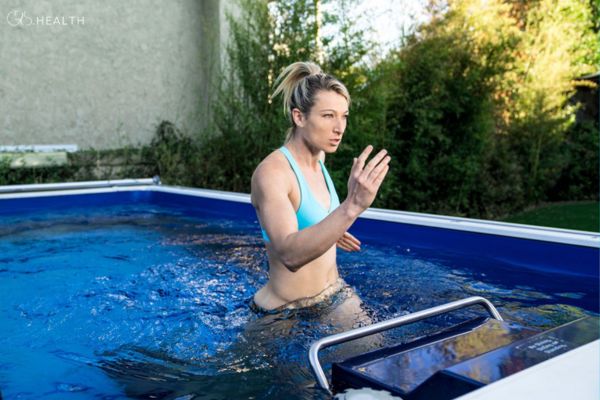
2. Flutter Kicks with Pool Noodle
Hold onto a pool noodle and flutter kick behind you while floating. Try interval sets: 30 seconds on, 15 seconds rest.
Benefits: Core activation, calorie burn, waist slimming.

3. Tuck Jumps
Jump and tuck knees to chest in shallow water. Engage core on every jump. Aim for 3 sets of 10-12 reps.
Benefits: High calorie expenditure, core strengthening, improved endurance.
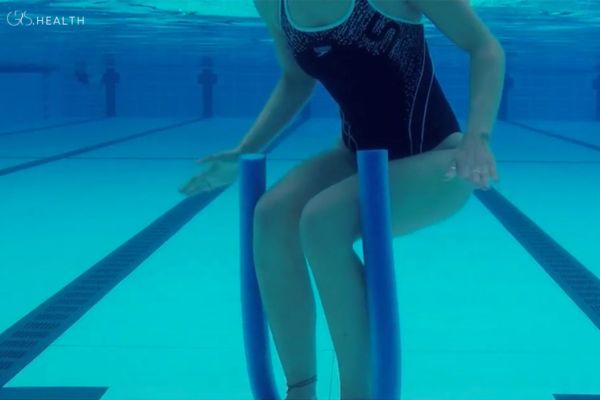
4. Jumping Jacks
Do traditional jacks in the pool. Increase intensity with speed or resistance gloves.
Benefits: Full-body activation, cardiovascular boost.

5. Aqua Cycling or Deep-Water Running
Use aqua bikes or wear a flotation belt for suspended jogging. These activities increase heart rate without joint strain.
Benefits: High-intensity interval training (HIIT) for fat loss.
6. Plank on the Pool Edge
Place your forearms on the edge of the pool and float your legs behind you, keeping your body in a straight line.
Benefits: Builds core strength, improves posture, targets waist.
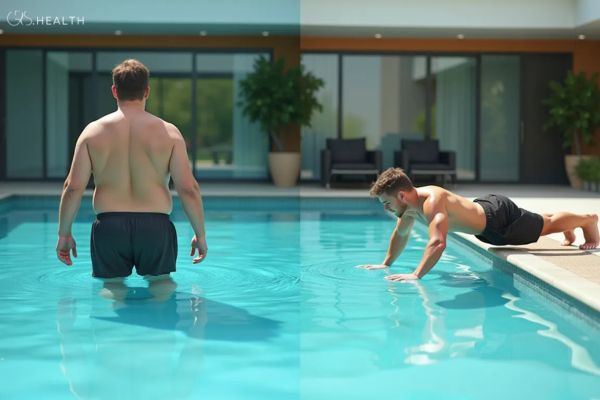
Real-World Success Stories
Many individuals with mobility issues, injuries, or obesity have turned to water-based fitness as a sustainable and safe path to weight loss.
A 2022 case study published in Frontiers in Physiology reported that obese adults participating in 12-week aquatic programs experienced not only significant reductions in body fat and waist circumference, but also enhanced psychological wellbeing and motivation — factors critical to long-term weight management.
Additionally, programs like Aqua Zumba and Hydro HIIT are gaining popularity for combining fun, community, and intensity, making pool workouts a regular fitness habit rather than a chore.
Aquatic Fitness vs. Land-Based Workouts: Which Is Better?
Both have unique benefits. However, aquatic fitness offers a lower-risk alternative that still meets the American College of Sports Medicine (ACSM) guidelines for effective aerobic and resistance training.
Aquatic workouts can be particularly beneficial for:
- Individuals with joint pain or osteoarthritis
- Those with obesity or musculoskeletal conditions
- Pregnant individuals or older adults
- Beginners seeking a non-intimidating environment
It’s also worth noting that aquatic exercise can be progressively intensified with equipment like water dumbbells, resistance gloves, and aqua joggers.
Psychological and Hormonal Benefits of Pool Workouts
In addition to physical benefits, pool workouts have a profound psychological impact. Immersion in water has been shown to:
- Reduce anxiety and depression symptoms
- Improve sleep quality
- Enhance body image perception in overweight individuals
- Support the release of dopamine and endorphins, boosting motivation
Additionally, aquatic exercise appears to reduce cortisol levels more effectively than land-based aerobic workouts, particularly when done in thermoneutral water (around 30–32°C).
Tips for Getting Started
If you’re considering pool workouts as a weight loss solution, here’s how to start smart:
- Frequency: Aim for at least 3–5 sessions per week, 45–60 minutes each.
- Intensity: Combine moderate-intensity routines (like walking and kicking) with interval bursts (like tuck jumps and aqua sprints).
- Progress: Use resistance tools and add variety to avoid plateaus.
- Hydration: Drink water before and after, even if you’re surrounded by it.
- Supervision: If you’re a beginner or have a medical condition, consult a professional or join a class.
Conclusion: Making Waves in Your Fitness Journey
Pool workouts are no longer just an alternative — they are a scientifically supported, full-body fat-burning solution that promotes weight loss, trims inches off the waist, and supports overall physical and mental well-being. With lower injury risks, enjoyable variety, and inclusive accessibility, aquatic exercise might just be the missing link for those struggling to stick with conventional workout programs.
Whether you’re looking to lose stubborn belly fat, boost your metabolism, or simply enjoy a more refreshing fitness experience, diving into the water could help you swim toward your healthiest self.
Sources
- PubMed Central (PMC), Effects of Hypoxic Training versus Normoxic Training on Exercise Performance in Competitive Swimmers
- MDPI , Supervised Exercise in Water: Is It a Viable Alternative in Overweight/Obese People with or without Type 2 Diabetes? A Pilot Study
- ResearchGate, Effects of water aerobics on body composition in obesity and overweight people: a systematic review and meta-analysis





